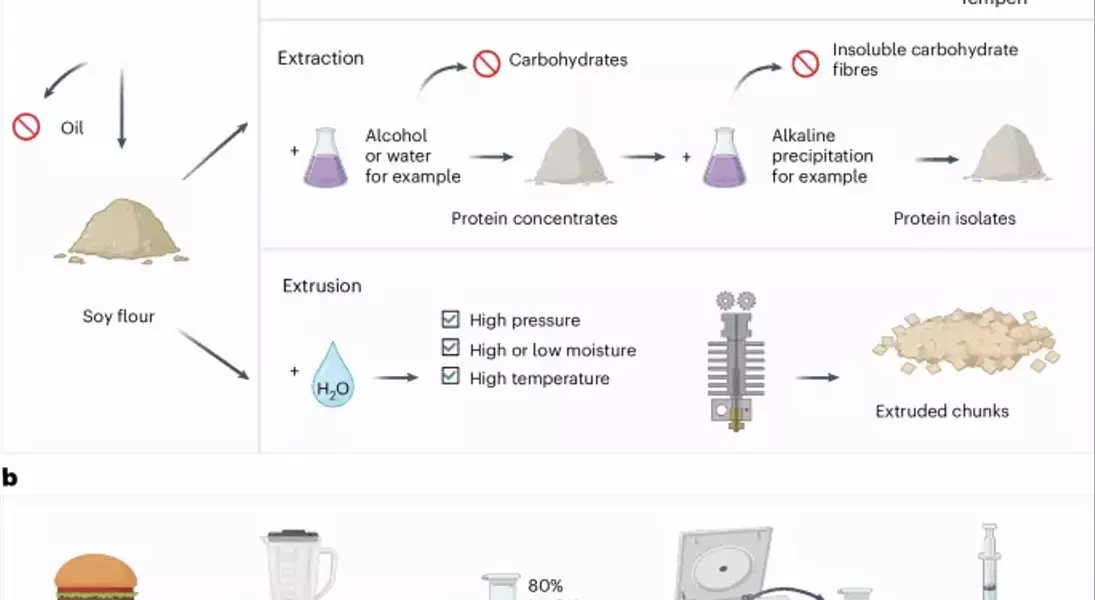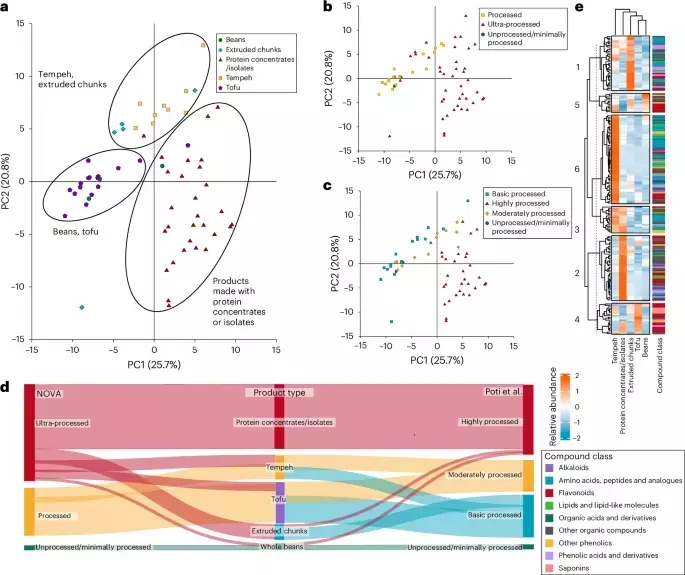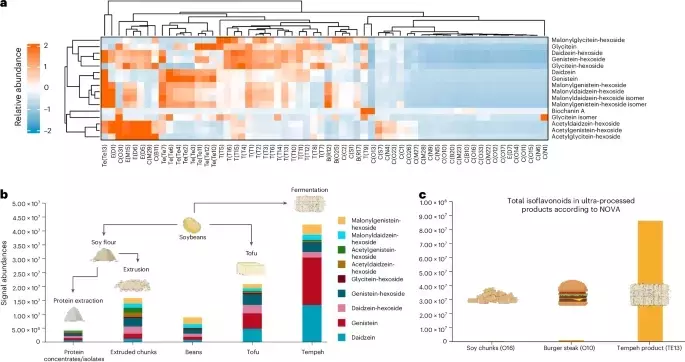





A groundbreaking study challenges the conventional food processing classification systems by emphasizing the importance of biochemical composition over mere processing techniques. The research delves into the impact of various processing methods on plant-based protein-rich (PBPR) foods, particularly soy-based products, revealing discrepancies in current categorization frameworks.
Through advanced metabolomics techniques, the investigation uncovered significant differences in the biochemical profiles of PBPR foods, even within the same processing category. For instance, soy-based products exhibited varying levels of isoflavonoids depending on their processing method, highlighting the limitations of existing classification systems like NOVA and Poti. These systems often overlook critical aspects such as fermentation benefits or the retention of bioactive compounds, potentially misleading consumers about the healthfulness of certain foods.
The analysis extended beyond soy to include other legumes, grains, and meat substitutes, demonstrating that each raw material reacts uniquely to different processing techniques. This diversity underscores the need for a more nuanced approach to classifying processed foods, one that considers not only the technological processes involved but also the resulting nutritional and phytochemical content.
Incorporating comprehensive biochemical profiling into food classification systems could revolutionize how we perceive processed foods. By focusing on the actual composition of these products rather than just the degree of processing, we can better guide consumers toward healthier choices. Such an approach would recognize the value of beneficial processing methods, such as fermentation, which enhances bioavailability and increases the presence of essential nutrients. Encouragingly, this shift in perspective promotes a more informed public discourse around nutrition, empowering individuals to make dietary decisions based on accurate information.
